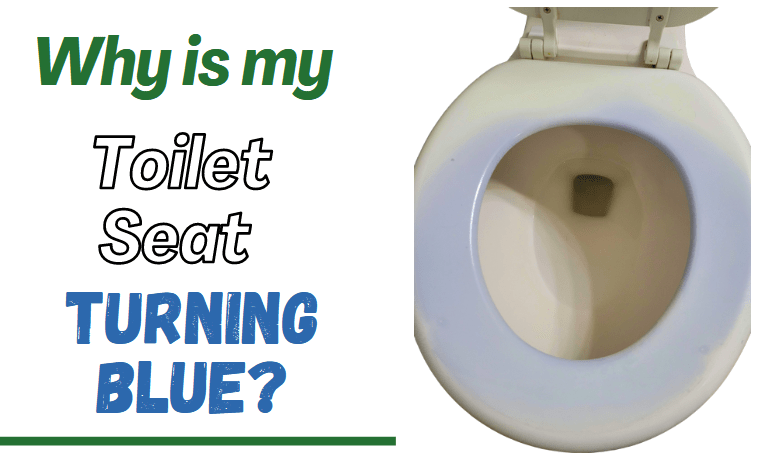In households across the globe, a perplexing mystery has been troubling many homeowners. The issue is not with the shower or the bubbles it produces; instead, it involves the toilet seat.
Many have noticed a peculiar phenomenon – their toilet seats are turning blue. While it may sound like a scene from a fantastical movie, this is a real issue, and it has left many scratching their heads in confusion and intrigue.
Why is My Toilet Seat Turning Blue?
The transformation of a toilet seat to a shade of blue is intriguing. Let’s examine these aspects more closely:

● Human Skin Interaction
At the heart of this fascinating transformation is not the toilet seat but the human skin that comes into contact with it. Specific individuals’ skin can react with the material of the toilet seat in such a way that it causes the seat to take on a blue hue.
This is not a universal occurrence and is likely limited to individuals whose sweat or skin oils have specific chemical properties that can elicit this reaction.
● Chromhidrosis
The condition known as chromhidrosis is at the center of this mysterious occurrence. This rare disorder impacts the sweat glands, causing them to exude sweat that may be colored, including shades of blue.
When it comes into contact with the toilet seat, this pigment-laden sweat may cause the latter to stain over time. Although chromhidrosis is relatively rare, a person suffering from this condition can cause a toilet seat blue due to regular use.
Read also: Why Is My Toilet Water Brown? 6 Possible Causes and What to Do
Myths of Blue Toilet Seat
With any unusual phenomenon, myths and misconceptions are bound to arise. Here are some associated with blue toilet seats:
● Pregnancy Indicator
Perhaps the most widespread myth is that a blue toilet seat is a harbinger of pregnancy. This misconception took root when it was noticed that some pregnant women reported their toilet seats turning blue.
However, this is a correlation, not a causation. Hormonal changes during pregnancy might cause variations in sweat composition, but it does not definitively mean that every blue toilet seat indicates pregnancy. It’s crucial to debunk this myth to prevent misinformation from spreading.
● Cleaning Product Stains
Another common myth tied to this phenomenon is that certain cleaning products can turn toilet seats blue. While it is true that some harsh cleaning products can stain various surfaces, they are typically not the cause behind the blue hue that some toilet seats acquire.
Ways to Fix or Restore a Blue Toilet Seat
You can undertake several remedial measures if you are dealing with a blue toilet seat.
● Thorough Cleaning
The first step to restoring the original color of your toilet seat involves meticulous cleaning. Using a non-abrasive, mild cleaner, scrub the seat gently yet thoroughly.
This will help remove any sweat or oil residues on the surface that may be causing the discoloration. After cleaning, dry the seat entirely and observe if the color lightens. Another alternative, you use baking soda and vinegar to clean the seat.
● Bleach-Based Cleaning
You can use a bleach-based cleaner if the initial cleaning doesn’t yield the desired results. However, it’s essential to proceed with caution.
Leaving bleach on the surface for an extended period can cause further discoloration or even damage the material of the seat. Always follow the instructions on the cleaning product and rinse the seat thoroughly after cleaning.
Replacement
Should your efforts to clean the seat prove futile, you might have to consider replacing the seat entirely. When shopping for a new seat, look for one resistant to stains and discoloration.
So, why is my toilet seat turning blue? Although unusual, the phenomenon of a blue toilet seat results from a rare medical condition known as chromhidrosis. Despite the surrounding myths and misconceptions, understanding the actual cause can lead to effective solutions.


